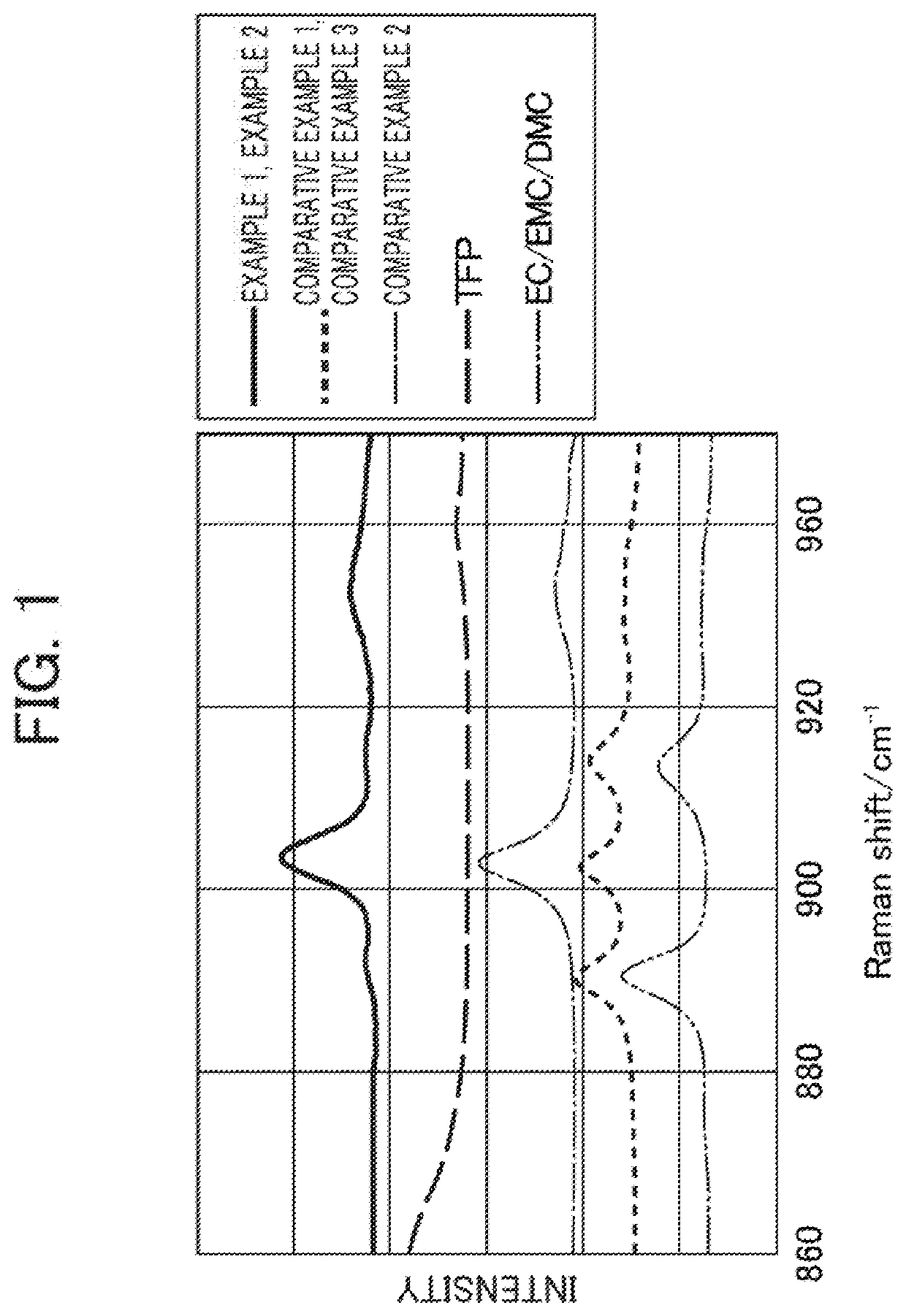Electrolytic solution for lithium ion secondary battery and a lithium ion secondary battery
- Summary
- Abstract
- Description
- Claims
- Application Information
AI Technical Summary
Benefits of technology
Problems solved by technology
Method used
Image
Examples
example 1
[Production of Positive Electrode]
[0074]LiNi0.6Co0.2Mn0.2O2 as a positive electrode active material, acetylene black as a conductive agent, and polyvinylidene fluoride (PVDF) as a binder were mixed in a mass ratio of 94:2:4 in N-methyl-2-pyrrolidone (NMP) as a dispersion solvent to prepare positive electrode slurry.
[0075]The obtained positive electrode slurry was applied by a doctor blade method to 20 μm thick aluminum foil prepared as a current collector to form a positive electrode active material layer.
The obtained product was punched into a round shape having a diameter of 12 mm to form a positive electrode.
[0076][Production of Negative Electrode]
Natural graphite as a negative electrode active material, styrene butadiene rubber (SBR) as a binder, and carboxymethyl cellulose (CMC) were mixed in a mass ratio of 97:1.5:1.5 in N-methyl-2-pyrrolidone (NMP) as a dispersion solvent to prepare negative electrode slurry.
[0077]The obtained negative electrode slurry was applied by a doctor...
example 2
[0080]A coin cell was produced in the same manner as in Example 1 except that the electrolytic solution was produced by dissolving 0.5 mol / L of LiPF6 and 0.5 mol / L of LiTFSI as electrolyte salts in an organic solvent mixture prepared by mixing EC, DMC, EMC, and TFP in a volume ratio of 18:24:18:40.
PUM
 Login to View More
Login to View More Abstract
Description
Claims
Application Information
 Login to View More
Login to View More - R&D
- Intellectual Property
- Life Sciences
- Materials
- Tech Scout
- Unparalleled Data Quality
- Higher Quality Content
- 60% Fewer Hallucinations
Browse by: Latest US Patents, China's latest patents, Technical Efficacy Thesaurus, Application Domain, Technology Topic, Popular Technical Reports.
© 2025 PatSnap. All rights reserved.Legal|Privacy policy|Modern Slavery Act Transparency Statement|Sitemap|About US| Contact US: help@patsnap.com

